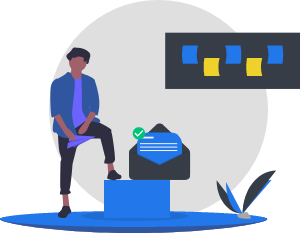When you retire, your salary stops, but your expenses don't. Ensuring your daily expenses are taken care of and that your lifestyle is maintained as before, a good retirement corpus is necessary. This is where the Employee Provident Fund comes to the rescue.
The Employee Provident Fund (EPF) helps people save up sufficient for their retirement. It was introduced with the Employees' Provident Funds Act in 1952 & managed by the Employees' Provident Fund Organisation.
An employer's contribution towards the employee's EPF account is 12% of the salary (basic plus salary dearness allowance retaining allowance). The EPF is regarded as a low-risk investment as Government of India manages it and assures a fixed rate of return.
The employee also has the choice to contribute more to his/her EPF account. There is no such prescribed value to which employees can contribute towards EPF as per the law. The contribution over the mandated 12% goes towards the Voluntary Provident Fund (VPF). VPF contributions also earn tax-free interest income.
The Employee Provident Fund contributes into two parts:
- If you are a man, you have to contribute 10-12% of your basic salary.
- If you are a new woman employee, it is 8% of your basic pay for the first three years, and after that, it becomes 10-12% of your basic salary.
Benefits of EPF
The Employee Provident Fund extends an array of benefits. It helps get financial stability and security in salaried employees.
- Capital Gains - The PF online scheme offers pre-fixed interest on the deposit and rewards at maturity, further ensuring growth in the employees' funds to accelerate capital growth.
- Emergency Fund - Uncertainties are a part of life. Therefore, being financially prepared is the best an individual can do to deal with difficulties. An EPF helps as an emergency fund when an individual requires emergency funds.
- Tax Benefits- Under Section 80C of the Indian Income Tax Act, employees' contribution towards their PF account is deemed eligible for tax exemption. Moreover, earnings generated through the EPF scheme are exempted from taxes.
Under What Circumstances can EPF be Withdrawn?
Individuals may opt for either partial/complete withdrawal of EPF. But such departures can be made under specific conditions.
Here is when individuals can completely withdraw their EPF:
- On retirement.
- If their unemployment extends to more than two months.
- While switching from one profession to another or in between jobs. But remember, that the duration of unemployment should be more than two months.
Here is a list of events under which individuals can withdraw EPF partially:
- For a wedding.
- For higher education.
- For purchasing land or constructing a house.
- Repayment of home loan.
- Renovating a housing property.
How to Check Your EPF Balance?
You can check the balance of your EPF account online in two ways:
- Through the EPFO website: You can use the EPFO website to view your PF passbook. You can also print the details if you need them.
- Visit the site - www.epfindia.gov.in
- Click on 'Our services' and choose 'For employees'
- Go to 'Services' and select the 'Member passbook' option
- Type your UAN and password to view your passbook
2. By Sending a SMS: You can view the message in a variety of Indian languages, including English and Hindi. If you want it in other languages, use the first three letters of your desired language instead of 'ENG'. For example, for receiving updates in Punjabi, you type - EPFHO UAN PUN. The facility is only available after integrating your UAN with your KYC details, i.e. Aadhaar or PAN or bank account details.
3. By Giving a Missed Call: Give a missed call to 011-22901406 from your registered mobile number. You'll receive an SMS containing your EPF balance. This service is also only available upon integrating your UAN with your KYC details.
You can be assured of your retirement money from the EPF scheme. And throughout your career, if you've moved jobs, you can be assured of availing the provident fund's benefits under the same account.
(Check out 'Learn & Grow with Wizely' to read and learn all about personal finance.)





